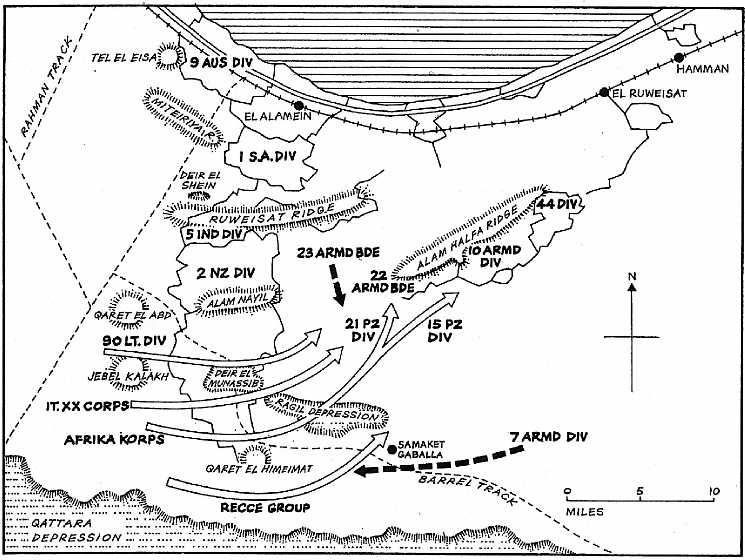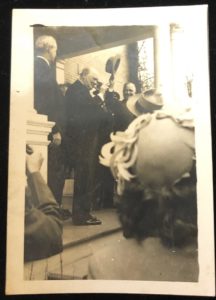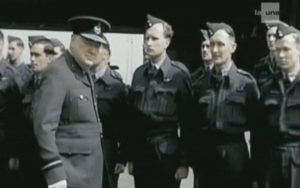
Bulletin #172 — Sep 2022
Rommel Repulsed

September 4, 2022
Battle of Alam Halfa Prepared Hinge of Fate
By WINSTON S. CHURCHILL
Eighty years ago, at the beginning of September 1942, General Erwin Rommel, commander of Germany’s Afrika Korps, began his final effort to drive his army eastward and capture Cairo only to be repulsed by the British Eighth Army, which had just come under the command of General Bernard Montgomery. In the fourth volume of his war memoirs, The Hinge of Fate, Winston Churchill tells the story of the battle that set up the turning of the tide in North Africa.
Rommel’s plan, correctly deduced by Montgomery, was to pass his armour through the weakly defended mine-belt in the southern part of the British front and then swing north to roll up our position from flank and rear. The critical ground for the success of this manoeuvre was the Alam Halfa ridge, and Montgomery’s dispositions were made principally to ensure that this did not fall into enemy hands.
During the night of August 30 the two armoured divisions of the German Afrika Korps penetrated the mine-belt, and next morning moved to the Ragil Depression. Our 7th Armoured Division, withdrawing steadily before them, took station on the eastward flank. To the north of the German armour two Italian armoured divisions and one motorised also attempted to cross the minefield. They had little success. It was deeper than they had expected, and they found themselves under severe harassing fire from the enfilading artillery of the New Zealand Division.

2024 International Churchill Conference
The German 90th Light division however successfully penetrated, to form a hinge for the armour’s northern swing. At the other end of the line simultaneous holding attacks were made on the 5th Indian and 9th Australian Divisions; these were repulsed after some stiff fighting.
From the Ragil Depression the German-Italian armour had the option of striking north against the Alam Halfa ridge or north-east towards Hamman. Montgomery hoped they would not take the latter course. He preferred to fight on his chosen battleground, the ridge. A map which showed easy going for tanks in that direction and bad going farther east had been planted upon Rommel. General von Thoma, captured two months later, stated that this false information had its intended effect. Certainly the battle now took the precise form that Montgomery desired.
On the evening of August 31st a northward thrust was repulsed and the enemy’s armoured mass went into laager for a night, uncomfortably spent under continuous artillery fire and violent air bombardment. Next morning they advanced against the centre of the British line, where the 10th Amroured Division were now concentrated to meet them. The sand was much heavier than they had been led to believe and the resistance far stronger than they had hoped.
The attack, though renewed in the afternoon, failed. Rommel was now deeply committed. The Italians had foundered. He had no hope of refreshing his forward armour and the heavy going had consumed much of his scanty fuel. He had probably heard also of the sinking of three more tankers in the Mediterranean. So on September 2 his armour took up a defensive posture and awaited attack.
Montgomery did not accept the invitation, and Rommel had no alternative but to withdraw. On the 3rd the movement began, harassed in flank by the 7th British Armoured Division, which took a heavy toll of unarmoured transport vehicles. That night the British counter-attack began, not on the enemy armour, but on the 90th Light and Trieste Motorised Divisions. If these could be broken, then the gaps in the minefield might be blocked before the German armour could return through them. The New Zealand Division made strong attacks, but they were fiercely resisted and the Afrika Korps escaped.
Montgomery now stopped the pursuit. He planned to seized the initiative when the time was ripe, but not yet. He was content to have repulsed Rommel’s final thrust for Egypt with such heavy loss. At relatively little cost to themselves the Eighth Army and the Desert Air Force had inflicted a heavy stroke upon the enemy and caused another crisis in his supply. From documents captured later we know that Rommel was in dire straights and of his insistent demands for help. We know too that he was a wearied, ailing man at the time. The consequences of Alam Halfa, as the engagement was called, were effective two months later.
Two months later came the Second Battle of El Alamein, the turning of the Hinge of Fate in the North African war. Read more about this and the other events of late 1942 and early 1943, including the Battle of Stalingrad, in the next issue of Finest Hour.
Subscribe
WANT MORE?
Get the Churchill Bulletin delivered to your inbox once a month.




